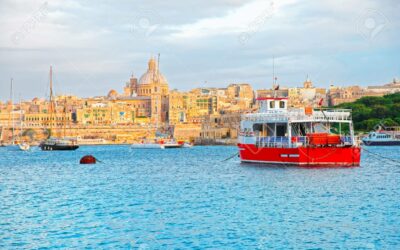The Knights of Malta and the Symbolism of the Maltese Cross
The Order of Saint John of Jerusalem, also known as the Knights of Malta, has left a lasting mark on European and Mediterranean history. Founded in the 11th century, the Order embodied both Christian devotion and humanitarian service.
Its most enduring emblem, the white eight-pointed Maltese Cross, reflects the dual nature of the Knights’ mission — uniting spiritual ideals with worldly organization.
Each of the eight points of the Maltese Cross represents a beatitude, a guiding virtue for every knight, as well as one of the eight “languages” or regional divisions that made up the international Order.
The 8 Beatitudes of the Knights of Malta
The spiritual foundation of the Knights of St. John was rooted in the pursuit of Christian perfection through the Eight Beatitudes, as taught by Christ in the Gospel. These moral principles served as a compass for the daily lives of the
knights — a code of faith, humility, and service.
Each point of the Maltese Cross symbolized one of these essential virtues:
1. To live in truth
2. To have faith
3. To repent of one’s sins
4. To be humble
5. To love justice
6. To be merciful
7. To be sincere and pure of heart
8. To endure persecution and adversity for justice
Over time, some interpretations adapted these values to reflect the chivalric and hospitable mission of the Order, emphasizing qualities such as loyalty, mercy, courage, honor, and solidarity with the poor.
These virtues guided the Knights not only in their spiritual lives but also in their daily duties — caring for the sick, protecting pilgrims, and defending Christian lands across the Mediterranean.

The Meaning of the Eight Points of the Maltese Cross
The Maltese Cross became the official symbol of the Order in the 11th century. Its eight-pointed design served as a visual reminder of the knights’ moral and spiritual commitments.
But beyond its religious symbolism, the cross also came to represent the organizational structure of the Order — its eight divisions, known as “languages.”
Each of the eight points of the cross thus embodies both a spiritual beatitude and a cultural identity, linking the ideals of faith and fraternity with the practical realities of medieval Europe.
The 8 Hostels or “Languages” of the Order
The Knights of St. John were a truly European brotherhood, composed of nobles and soldiers from across the continent.
To manage this diversity, the Order was divided into eight “languages”, each representing a major region and having its own hostel or administrative center in Malta (and earlier, in Rhodes):
| Language | Main Nation |
| Provence | Southern France |
| Auvergne | Central France |
| France | Northern France |
| Italy | Italian Peninsula |
| Aragon | Spain (Aragon region) |
| Castile and Portugal | Spain and Portugal |
| Germany | Germany and Austria |
| England | England, Scotland, and Ireland |
These “languages” worked together within the same hierarchy, reflecting both the unity and diversity of the Christian world under the banner of the Maltese Cross.
A Symbol Bridging Faith and Action
The eight-pointed Maltese Cross stands at the intersection of spirituality and practicality. For the Knights, it was a daily reminder of their duty to serve, both in faith and in action.
It symbolized the union between moral virtue and military discipline, between the spiritual and the temporal. Through this emblem, the Order of Saint John embodied the Christian ideal of compassion and courage — principles still associated with the Sovereign Military Order of Malta today.
The Living Legacy of the Maltese Cross
Even centuries later, the Maltese Cross remains one of the most recognizable symbols in the world. Its eight points continue to represent the Beatitudes —humility, truth, justice, and mercy — and the enduring values of service and solidarity that guided the Knights of Malta.
More than just a historical emblem, it is a living moral compass, reminding us of the importance of integrity, faith, and compassion in everyday life.




